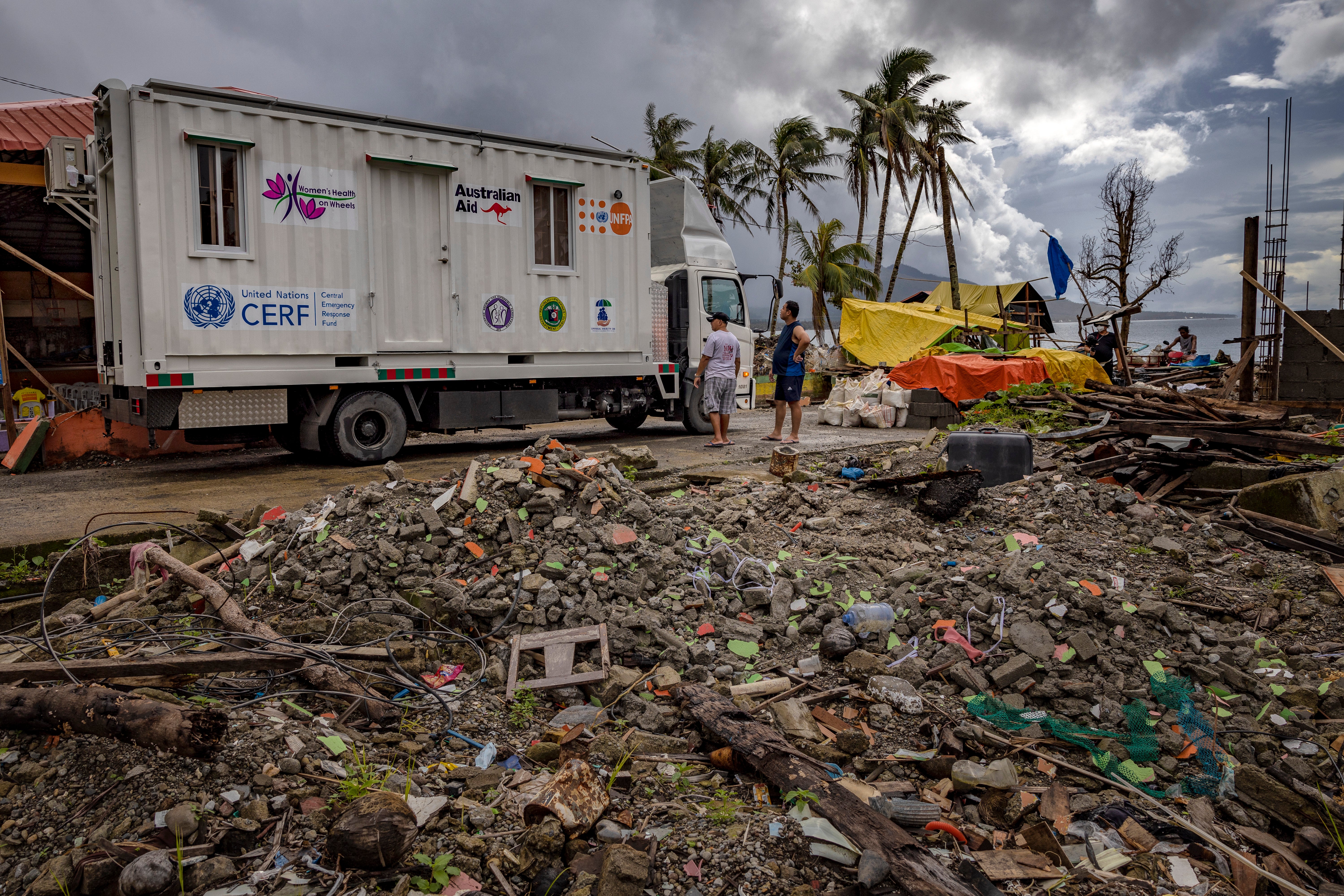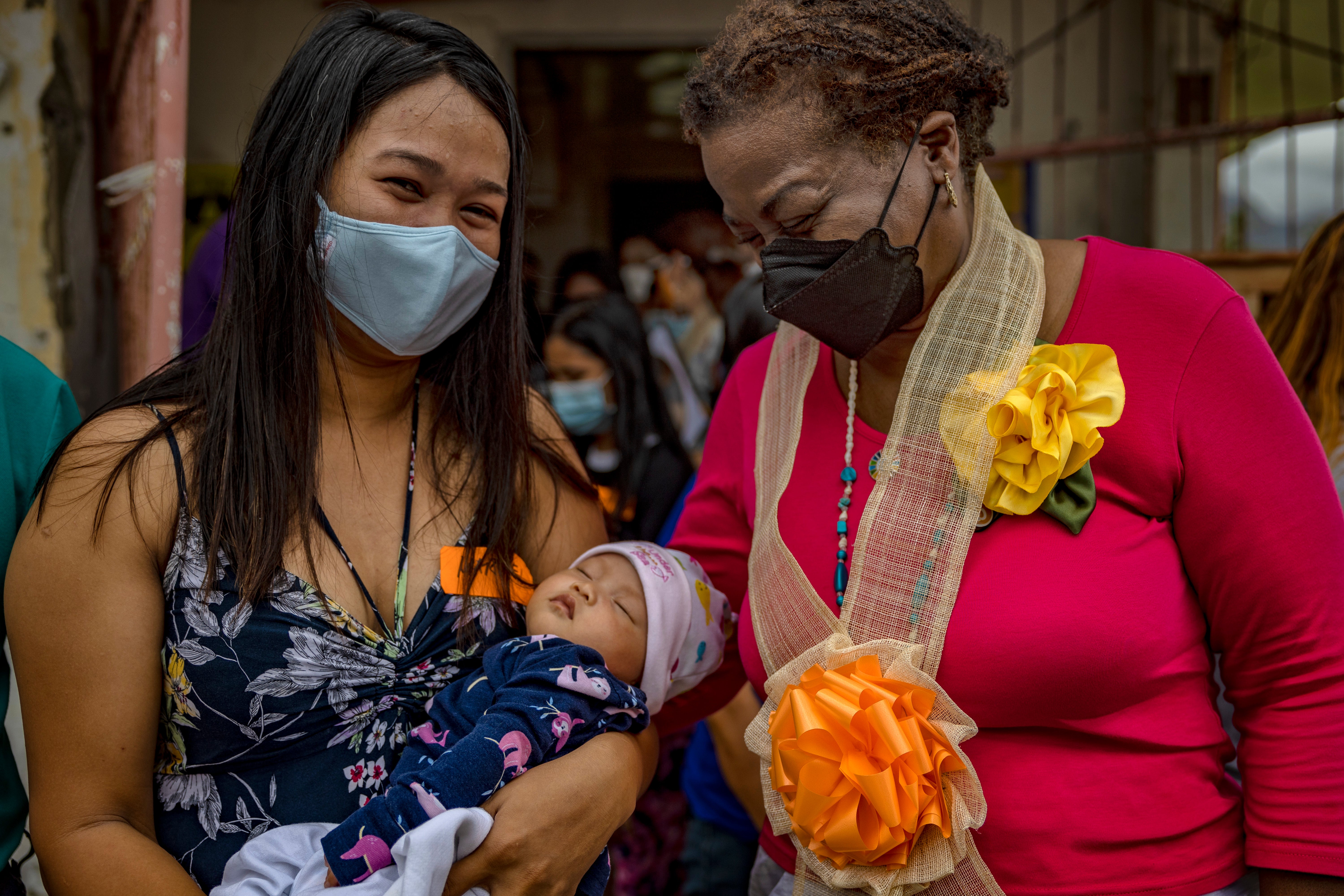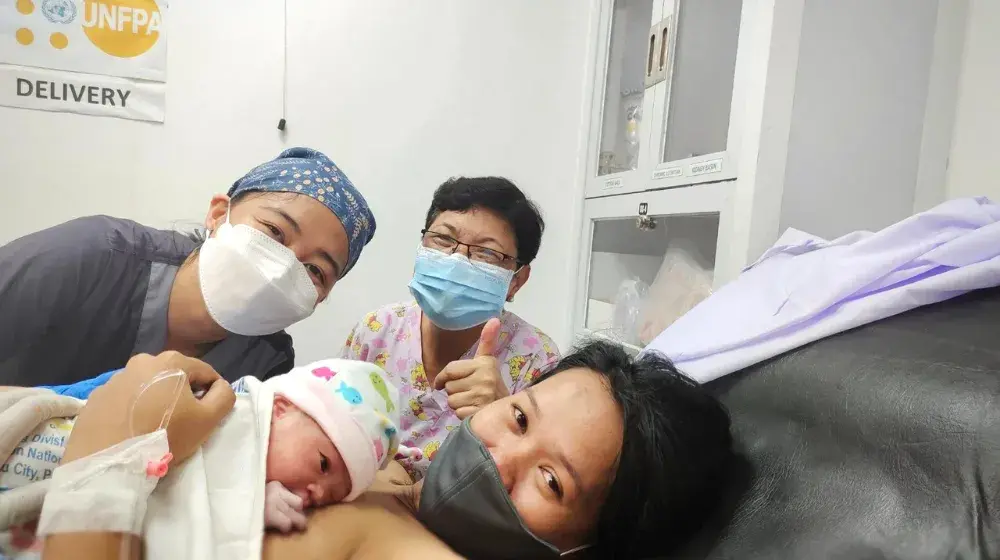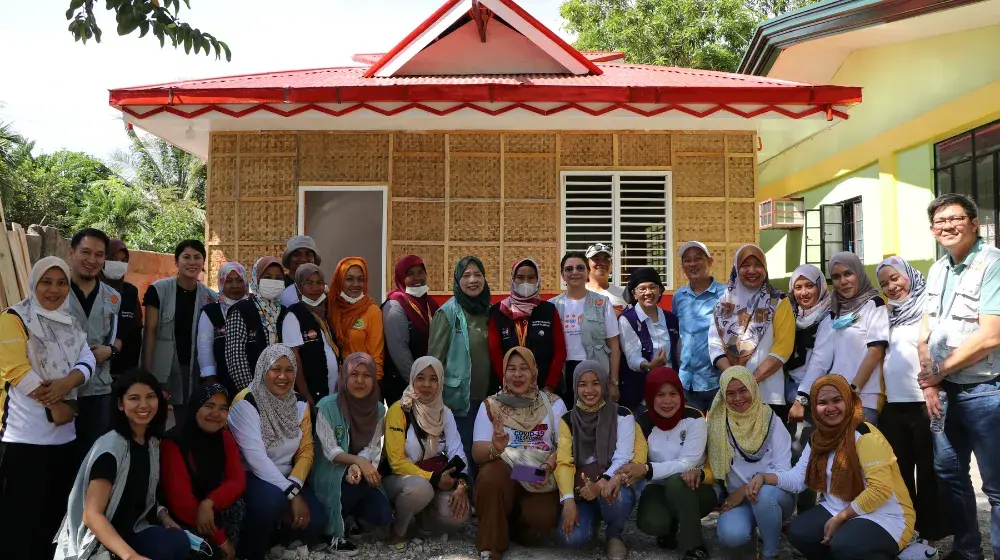Mobile stability amid uncertainty
St. Bernard, Philippines --- “The wind bent over the palm trees, ripped out roofs, and my first instinct was to run.”
Mariel, 30, a pregnant woman in the small fishing town in Southern Leyte, recalled the day Super Typhoon Rai hit the country. It was a few days before Christmas and as the community was busy preparing for the festive season, Rai made landfall with sustained maximum winds of 195 kilometers per hour.
The storm ripped through the community, peeled over roofs, blew away houses, and caused thousands of people to flee their homes.
“Our house was gone, we could smell petrol fuel that leaked from the fishing boats, and the wind was howling. I wanted to run to the mountains with my two young children,” Mariel described.
Numbers from the government show more than 397 people perished during the typhoon and displaced more than half a million.
Mariel was able to find shelter at a friend’s house. Being seven months pregnant in a middle of a natural disaster was a crisis in a crisis as the health infrastructure was destroyed and there was no access to health services.
A rolling salvation
As the community slowly picked up their lives in the aftermath of the storm, pregnant women like Mariel struggled to find functioning health services.
In her official visit to the storm-ravaged community of St. Bernard, UNFPA’s Executive Director Natalia Kanem said, “Humanitarian crises such as such as natural disasters leave not just communities upended but expose women and girls to be more vulnerable.”
Many health facilities are damaged in crisis, and even where health facilities are functioning, the delivery of sexual and reproductive health care, including maternal health and protection services, is severely impacted by a shortage of skilled staff and a lack of supplies and equipment.
Pregnant women do not have access to antenatal and postnatal care, which are critical to reducing maternal and newborn mortality and morbidity.
“One day, a white truck was in the community, and someone told me that they have health services there. I did not believe them, but I eventually went there, and my worries were gone,” Mariel said with a big smile, her eyes twinkling.
The truck is the Mobile Women’s Health on Wheels (WHoW), an emergency mobile maternity modular facility deployed to areas with humanitarian emergencies. It supports basic emergency obstetrics and neonatal care services in the aftermath of an emergency.
Painted white and a stark structure resembling a science fiction vehicle in the middle of a disaster zone that looks like an alien terrain, WHoW is the default set-up if basic emergency obstetric and newborn care services are disrupted. Located in the center of town in St. Bernard, the mobile unit is a beacon of survival and hope for many of the vulnerable women and girls in the community.
With its ability to be mobile, the truck can reach remote areas and can provide rapid response to women in dire need due to natural disasters and other humanitarian emergencies. UNFPA, together with the government, sees the mobile units as an ideal solution to provide sexual reproductive and health services to women in need in times of emergencies.

Love and hope
While observing the devastation brought about by the storm, Dr. Kanem reflected, “Disasters and conflicts worsen gender inequalities. Sadly, this is the reality today—a record number of people around the world are displaced and in need of humanitarian assistance and access to essential services, and it is women and girls who are paying the heaviest price.
While the statistics are grim, Dr. Kanem added there is a solution by listening and investing in women. Their leadership and resilience bring communities together; lead efforts to mitigate and adapt to climate change, and drive reconciliation and ensure long-lasting peace.
During the visit, new mother Mariel introduced her baby to Dr. Kanem. She narrated she gave birth on February 14 assisted by skilled providers in maternal care and comforted by the presence of modern medical facilities in the middle of a disaster zone.
Mariel named her baby Heart Eunne Fae. Heart for being born on Valentine’s Day and Eunne Fae, a tribute to UNFPA. The newborn symbolized a fresh start, of love and hope in a chaotic world.
When Dr. Kanem asked the new mother about her wish for Eunne Fae, she replied with a catch in her voice, “Brighter skies, a roof over her head, and a better life than what we have now. And to live in a world where she can grow up without fear and become a girl who can bring change to our community.”






